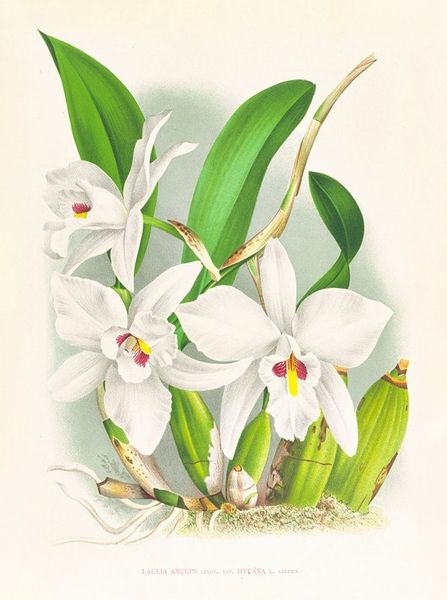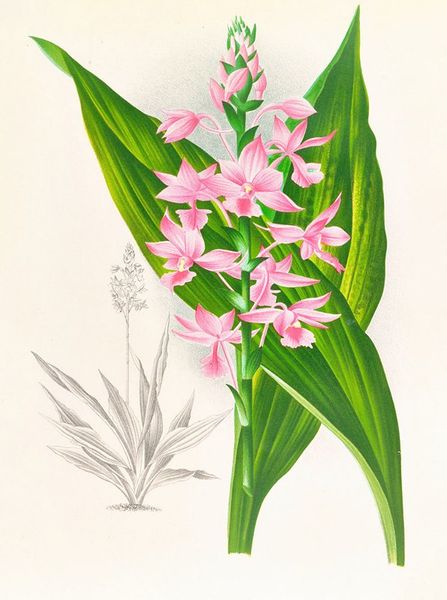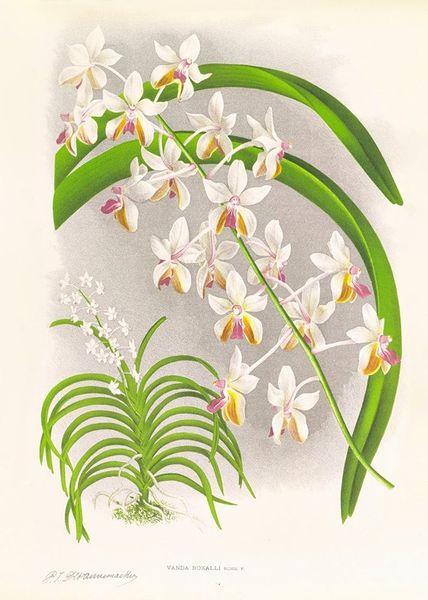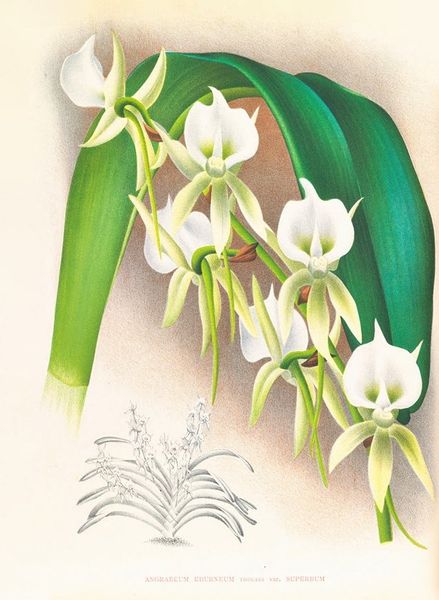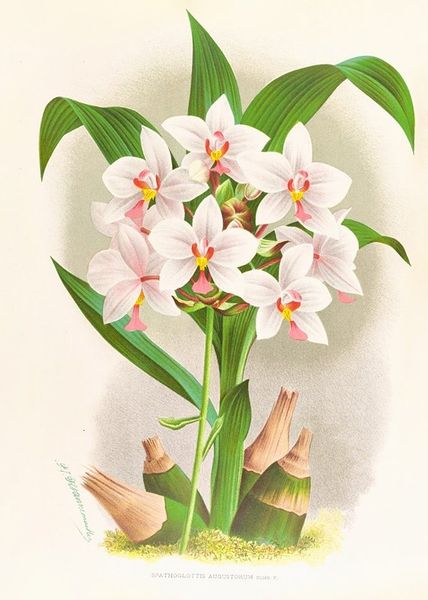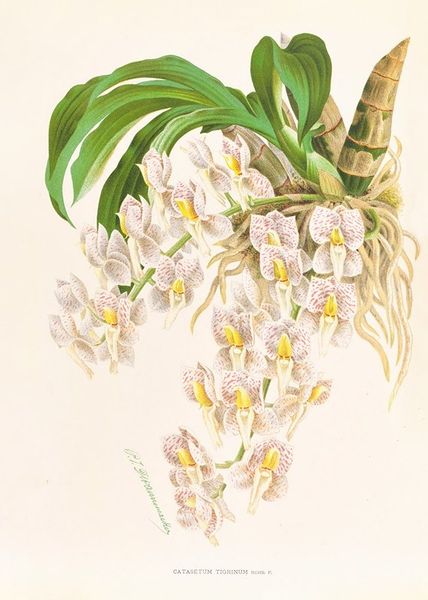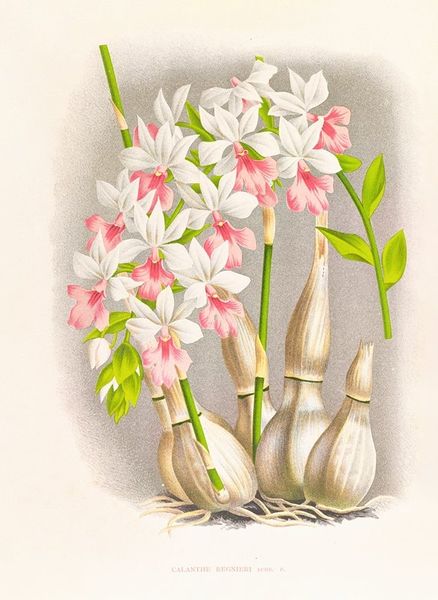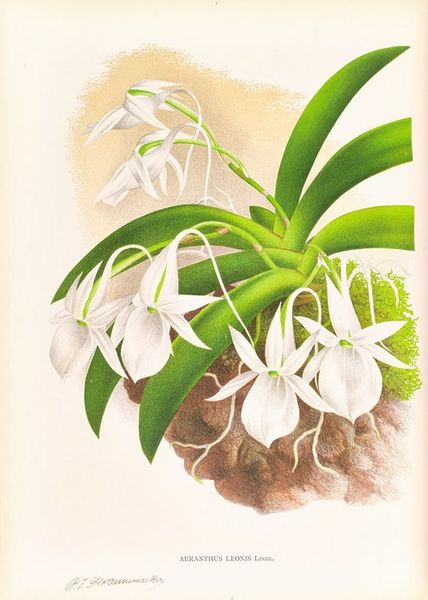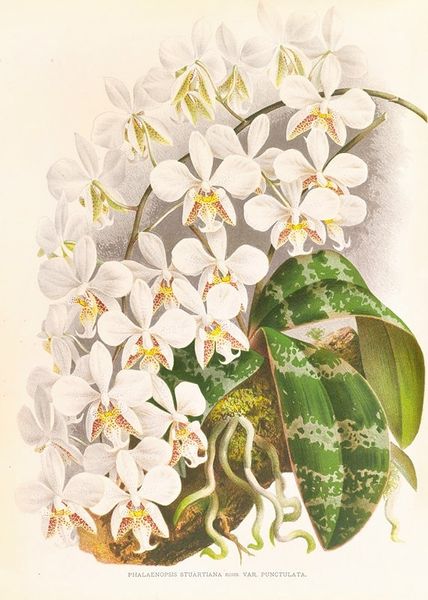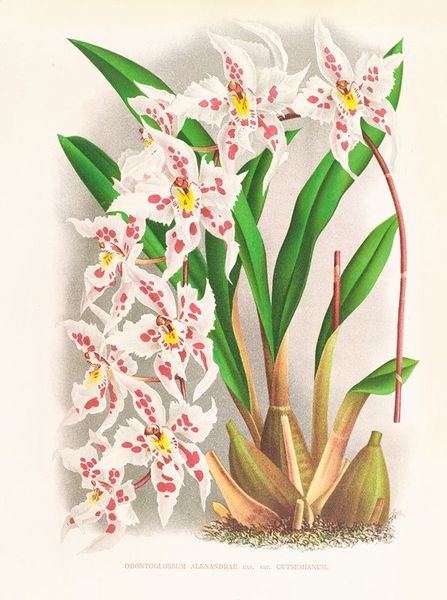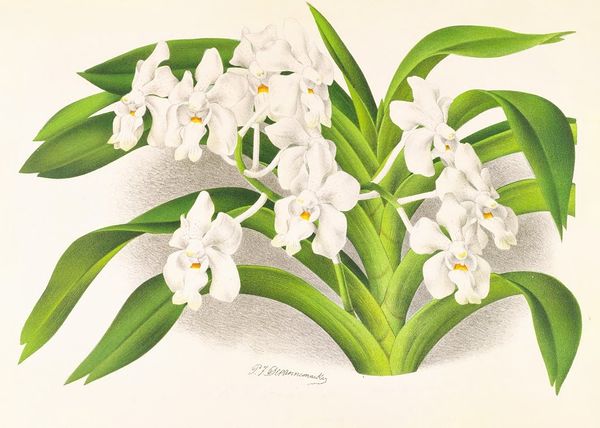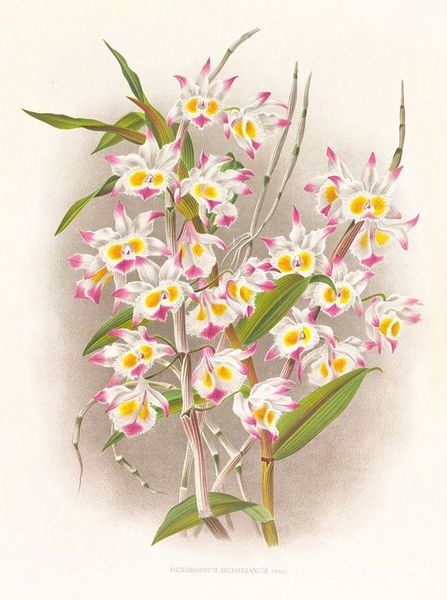
Copyright: Public Domain: Artvee
Curator: It's quite a pristine piece, wouldn't you say? I find the stillness mesmerizing. Editor: It is rather beautiful. Let's delve a little deeper. This is "Catasetum bungerothi," a watercolor and drawing produced by Jean Jules Linden sometime between 1885 and 1906. What initially strikes you about the artwork’s materiality? Curator: I am immediately drawn to the detail. The use of watercolor on paper allowed for such delicacy and intricacy. You can see the distinct veins in each leaf, the subtle shading that gives the white petals volume. It showcases an incredible command of the medium, right? Editor: Absolutely. And beyond technique, I consider this within a historical context where botanical illustration served both scientific and aesthetic purposes. The Romanticist style, with its emphasis on emotion and the sublime within nature, intertwined with Realism's empirical observations, creates a really powerful tension, reflecting broader shifts in knowledge and perception. Who do you imagine this art was made for, what purpose would it serve? Curator: Likely for botanical study or perhaps to be reproduced in publications, certainly for scholarly uses, maybe something like a cataloging of flora. We often forget the labor involved, too. Who prepared the paper? Where did the pigments come from, and how were they made? The art reflects colonial exploration of botanical resources. Editor: It certainly evokes the power dynamics embedded in scientific exploration during that time, specifically within post-colonial scientific endeavor. How botanical depictions have always played a role in shaping cultural perceptions. In this time period, natural illustration of orchids helped fuel, on some levels, exploitive international market systems around these resources, and created value associated to plants of other regions for commercial benefits. I do enjoy its beauty as much as I am wary about its historic weight and legacy. Curator: An important caution. It reminds us that every artwork, no matter how seemingly simple or beautiful, carries a freight of history and embedded power dynamics tied to labor and economic benefit. Thank you for framing it that way. Editor: My pleasure. Looking at this, it reminds us that our interactions with beauty, whether art or nature, is complex and often inextricably linked to the economic, social, and scientific realities from which it emerges. Curator: I appreciate how much information we are now better informed on through careful inspection and an interdisciplinary lens. This helps appreciate more facets beyond its immediate elegance.
Comments
No comments
Be the first to comment and join the conversation on the ultimate creative platform.

